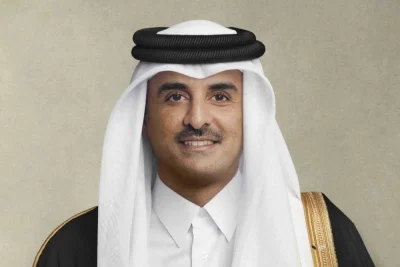Investors talk as they monitor screens displaying stock information at the Saudi Stock Exchange (Tadawul) in Riyadh. The main Saudi stock index yesterday jumped 4.2% in a broad rally which included the petrochemicals sector.
Saudi Arabia’s finance minister says state to keep spending; market regains some of Tuesday’s losses but remains volatile; Fitch says outlook bullish for Gulf bank profits; lenders lift markets in Qatar, Abu Dhabi; Egypt tumbles again on forex concerns
Most Gulf stock markets regained strength yesterday as oil’s slide paused, with blue chip banks pushing Abu Dhabi up sharply and Saudi Arabia’s bourse jumping after the kingdom’s finance minister said the government would continue spending heavily.
Brent crude held below $60 a barrel yesterday, at roughly the same levels as on Tuesday, as major oil producers signalled they would maintain output despite a supply glut and faltering demand in Russia and Europe.
Saudi Finance Minister Ibrahim Alassaf partially reassured investors when he said his government would continue spending on development projects and social benefits in its 2015 budget, and that it would maintain a “counter-cyclical” policy in the face of challenging global economic conditions.
This implied the government would not cut back spending sharply in response to lower oil prices in its 2015 budget - a relief to the market. The budget is expected to be announced on Monday.
The main Saudi stock index jumped 4.2% in a broad rally which included the petrochemicals sector. Saudi Basic Industries, the biggest company in the sector and in the whole market, added 4.8%.
However, the market remained volatile and seesawed during the day, swinging between a 1.4% loss and a 4.8% gain. Trading volume rose to a three-month high, a technical sign that the market’s downtrend might conceivably be reversing.
Another positive factor for Saudi Arabia and the Gulf markets was a report by Fitch Ratings late on Tuesday in which the agency said it believed “problem loans have generally peaked within the GCC and impairment charges should continue to fall, leading to higher profitability”.
Abu Dhabi’s index surged 5.1% as shares in its three largest banks, First Gulf Bank, National Bank of Abu Dhabi and Abu Dhabi Commercial Bank, surged 11.2, 8.0 and 9.3% respectively.
Dubai’s index ended 1.6% lower as its rebound was met with fresh selling, mainly in the property and construction sectors. Emaar Properties lost 3.6% and builder Arabtec tumbled its daily 10% limit.
However, lenders Emirates NBD and Dubai Islamic Bank rose 4.9 and 2.0%.
Local investors hope foreigners looking to exit the market before the end of the year have already done so and that selling pressure will now subside, said Sanyalak Manibhandu, manager of research at NBAD Securities in Abu Dhabi.
Also, some may be betting that money from Emaar Properties’ 9bn dirham ($2.5bn) dividend payout on December 23 will be partly reinvested in the market.
“Valuations are now very attractive compared to what they were early in the year,” Manibhandu said. However, “going forward, for sustainability you need to see crude prices not fall much from where they are now.”
Outside the Gulf, Egypt’s bourse declined further, tumbling 4.6% as most stocks were in the red.
Harshjit Oza, assistant director of research at Naeem brokerage in Cairo, said one of investors’ concerns might be the expected strengthening of the US dollar globally.
This could encourage fresh capital outflows from Egypt and pressure the country’s hard currency supplies; the Egyptian pound has weakened in the black market in recent months.
Also, the collapse of the Russian rouble has prompted many funds to bail out of emerging assets, taking MSCI’s emerging equity index to new 17-month lows.
Elsewhere in the Gulf, Oman’s index added 1.4% to 5,483 points, while Kuwait’s index fell 0.9% to 6,116 points.



